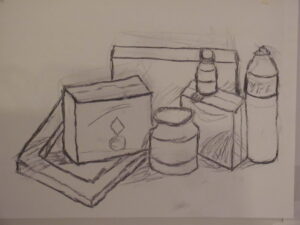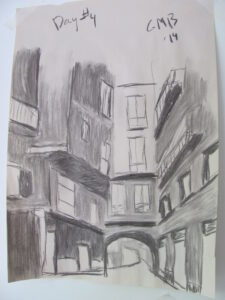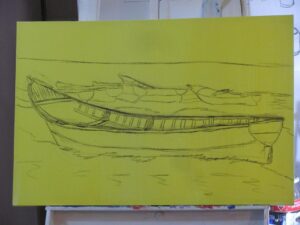
A sketch by me early in my career
As I do often when I have some time to kill, I float through the Internet looking for ways to improve as an artist. Sometimes I stumble on basic instructions such as this one about shape and form. I find these basic instruction sites helpful because it helps to remind me the fundamentals. However, I much prefer to take the next level. That’s why I was happy to have found Keene Wilson’s art notes for the advanced artist. Wilson does a great job of just listing things to remember. These are his notes, so they aren’t meant to be a book or step-by-step how-to on how to do things better. Instead, these are things one should remember.

Gothic Quarter – Barcelona
Basics
- Draw what you see, and if you can’t see, draw what you know
- Show soft corners, nearest observer
- Observe angles, arcs, verticals and horizontals
- Observe both sides of the form, draw into the form, not just the contours
- Use structure and symmetry
- Use overlap
- Get the gesture first
- Use errors to improve the drawing, start lightly and don’t erase
- Move from general to particular

Pre-painting sketch on canvas done after many trials on paper
- Increase the contrast. Make all areas in the light a little lighter than you see them, and all areas in the shadow a little darker than you see them. The object is to make all lighted areas hold together as one group, as should the shadow areas. Otherwise, the subject will not hold together; it will lose validity. – Fred Fixler
- Even in a sketch, have something implying the background
- You need to know how to make something unimportant as well as important [focus]
- Should not have line driven style and shape driven style in the same picture.
My advice is draw as much as you can, even if you’re a sculptor, painter, or if you do installations. Drawing helps build not only skills but also ideas, too. I hope the link above, which has many more than what I listed here, helps you out.